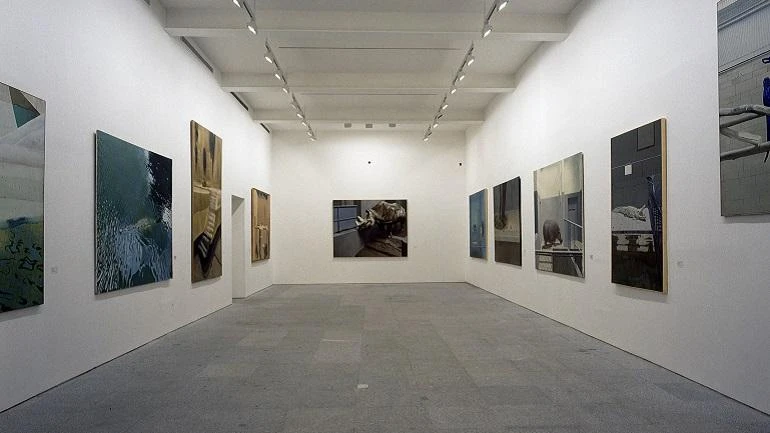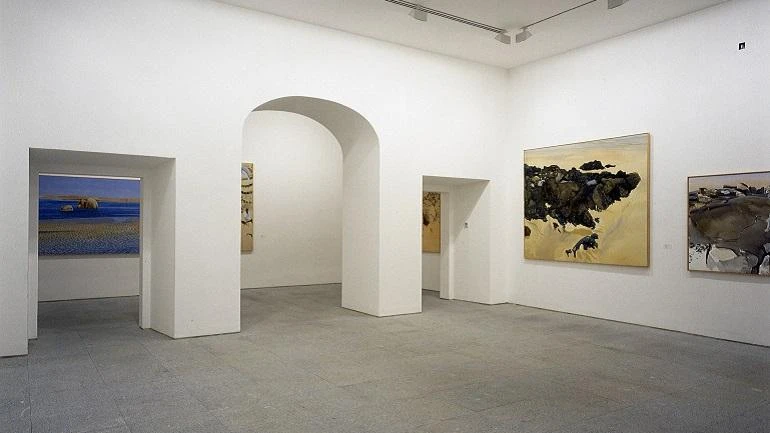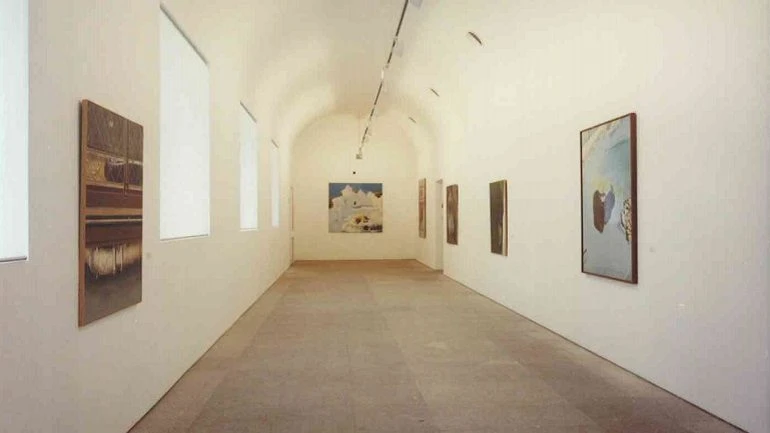Gilles Aillaud
Aillaud’s paintings are a stylistically and conceptually homogeneous work where two themes are shaped: animals in the zoo and scenic landscapes, appearing as a subject from 1978 and with which he develops a style that Christian Derouet calls "extremely finished". On one hand, the light (natural or artificial) and colour form the basis of his painting. On the other, animals, which become the silent protagonists of his large canvases. They are not presented as allegories or symbols, but as examples of alienation and life turned into a spectacle. In this way the artist, present in his paintings through his look, plays the same role the audience does, looking inside the cages or aquaria in search of acknowledgment by the hippopotamus or tapir. The inclusion of the bars not only gives an idea of separation to the painting, it also appeals to emptiness and gives a constructive value as extracted from his admiration for Vermeer, but also emotional as in that empty space the relationships between animal and the viewer are established.
As for the scenery, whether set on a river or in the desert, they share a strong and distant horizon line that allows for the creation of a vast stage on which the reasons, living or inert, animals or rocks, are concentrated in the background. By doing this Aillaud introduces the same idea of distance that dominate his zoo scenes and in the words of Michael Sager, he paints beautiful and accurate ways of being in the world.
Artists
Organised by
Museo Nacional Centro de Arte Reina Sofía
Image gallery


